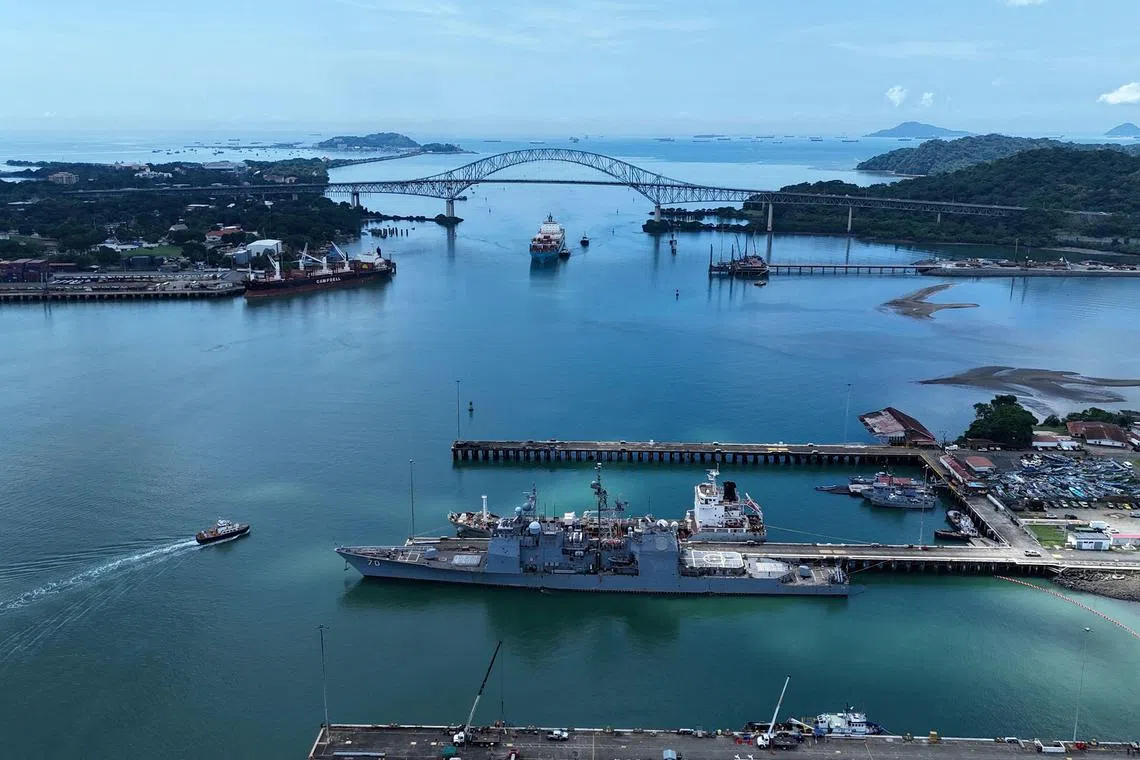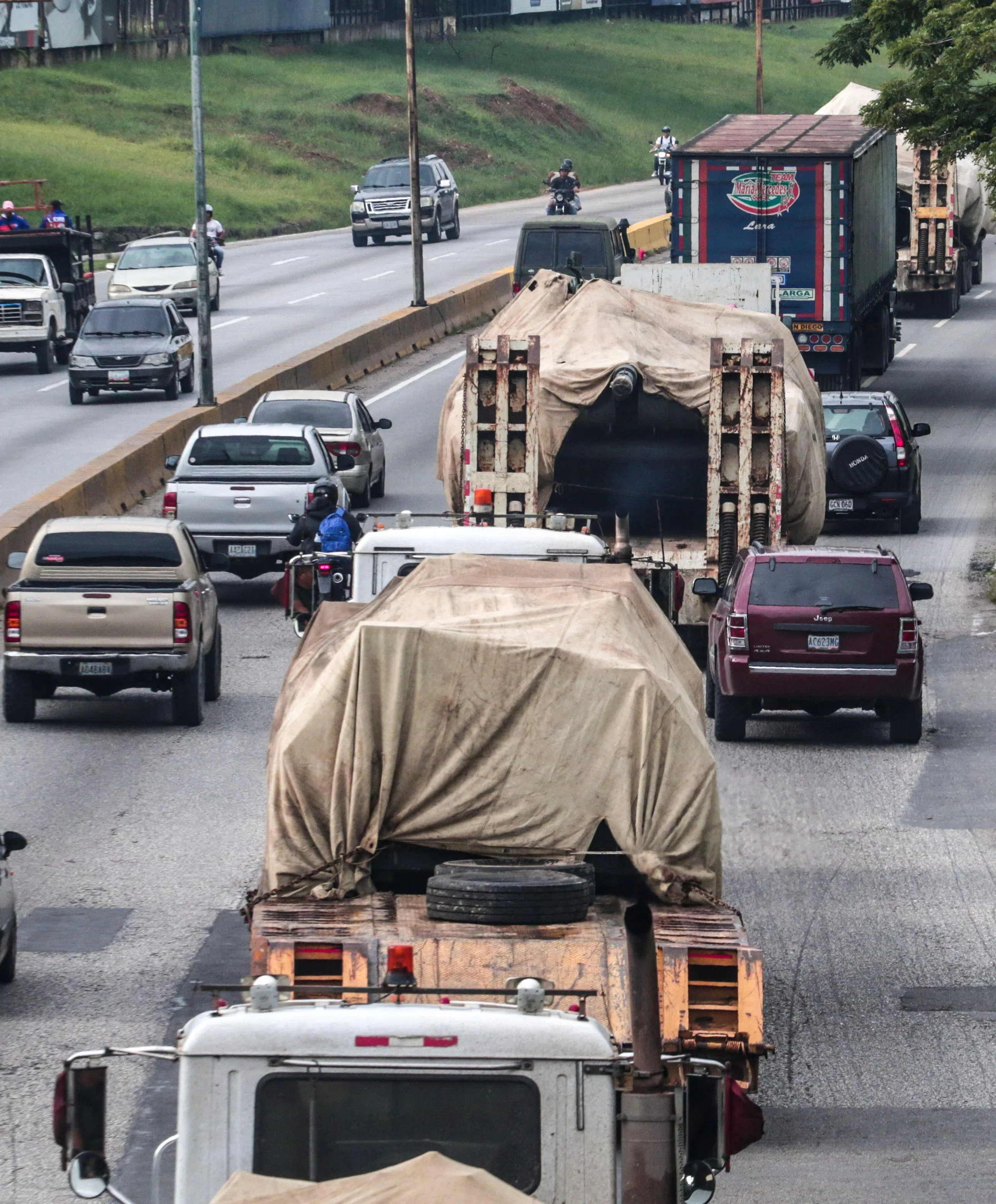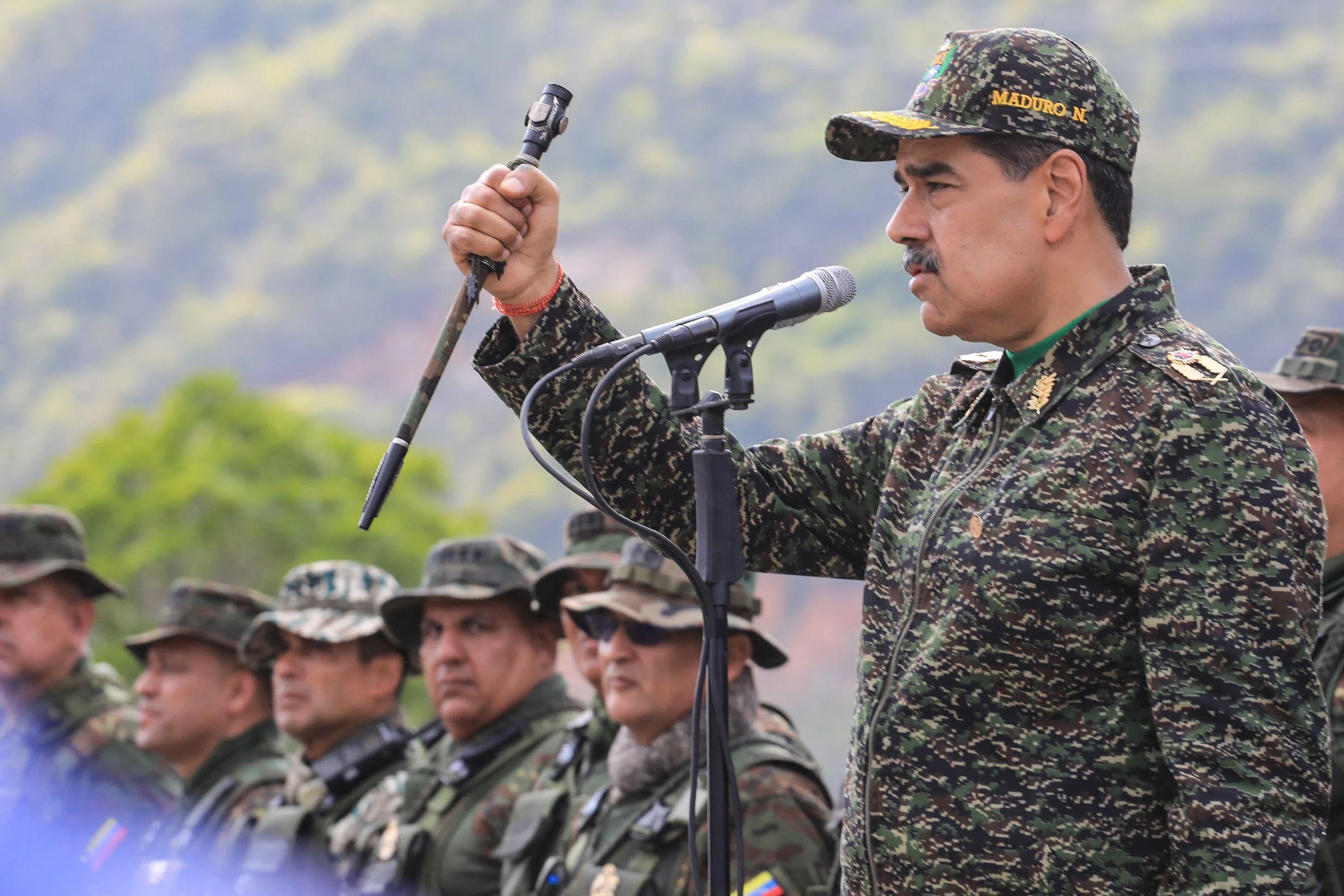US builds up forces in Caribbean as officials, experts, ask why
Sign up now: Get ST's newsletters delivered to your inbox

The US Navy warship USS Lake Erie docking at the Port of Balboa in Panama City on Aug 29.
PHOTO: AFP
Follow topic:
- US naval buildup in the Caribbean, with warships and personnel, aims to combat drug cartels, according to the Trump administration.
- Venezuelan officials, including Maduro and General Padrino, view the US deployment as a threat and violation of treaties, denying drug trafficking links.
- Experts suggest the buildup is pressure on the Maduro government, while the UN highlights the Pacific as the main cocaine trafficking route.
AI generated
WASHINGTON - A large buildup of US naval forces in and around the Southern Caribbean has officials in Caracas and experts in the United States asking: Is the move aimed at combating drug cartels, as the Trump administration has suggested, or is it for something else entirely?
Seven US warships, along with one nuclear-powered fast-attack submarine, are either in the region or are expected to be there soon, bringing along more than 4,500 sailors and marines.
US President Donald Trump has said combating drug cartels is a central goal of his administration and US officials have told Reuters that the military efforts aim to address threats from those cartels.
Mr Stephen Miller, deputy White House chief of staff, said on Aug 29 that the aim of the military buildup was to “combat and dismantle drug trafficking organisations, criminal cartels and these foreign terrorist organisations in our hemisphere.”
But it is unclear exactly how the US military presence would disrupt the drug trade.
Among other things, most of the seaborne drug trade travels to the US via the Pacific, not the Atlantic, where the US forces are, and much of what arrives via the Caribbean comes on clandestine flights.
Venezuelan officials believe their government might be the real target.
In early August, the US doubled its reward
Mr Maduro, Interior Minister Diosdado Cabello and the country’s ambassador to the United Nations, Mr Samuel Moncada, have said the US is threatening the country with the naval deployments, in violation of international treaties.
They have also scoffed at US assertions that the country and its leadership are key to major international drug trafficking.
“Venezuelans know who is behind these military threats by the United States against our country,” Venezuela’s Defence Minister, General Vladimir Padrino, said at a civil defence event on Aug 29, without offering further details.
“We are not drug traffickers, we are noble and hard-working people.”
‘Gunboat diplomacy’
While US Coast Guard and Navy ships regularly operate in the Southern Caribbean, the current buildup exceeds the usual deployments in the region.
In the naval force are warships, including USS San Antonio, USS Iwo Jima, and USS Fort Lauderdale. Some can carry aerial assets like helicopters, while others can also deploy Tomahawk cruise missiles.

Seven US warships, along with one nuclear-powered fast-attack submarine, are either in the region or are expected to be there soon.
PHOTO: AFP
The US military has also been flying P-8 spy planes in the region to gather intelligence, US officials have said. They have been flying over international waters.
The Trump administration has said it can use the military to go after drug cartels and criminal groups and has directed the Pentagon to prepare options.
US Secretary of State Marco Rubio travelled to Doral, Florida, on Aug 29 to visit the headquarters of the US military’s Southern Command, which oversees operations in the region.
Professor David Smilde, a Venezuela expert at Tulane University, said the military moves appeared to be an effort to pressure the Maduro government.
“I think what they are trying to do is put maximum pressure, real military pressure, on the regime to see if they can get it to break,” Prof Smilde said.
“It’s gunboat diplomacy. It’s old-fashioned tactics,” he added.

Venezuelan army trucks transporting tanks on a highway in Valencia, Venezuela, on Aug 27.
PHOTO: AFP
While the naval forces are in the Caribbean and the Atlantic, the Pacific Ocean is the bigger route for maritime trafficking of cocaine, the United Nations Office on Drugs and Crime said in its 2023 Global Report on Cocaine, citing figures from the US DEA that show 74 per cent of cocaine flowing north out of South America is trafficked over the Pacific.
Traffickers use aeroplanes to send cocaine northwards through the Caribbean, the report said, naming Venezuela as a major hub for such departures. Mexico is the main source of fentanyl into the US, with drug cartels smuggling it over the border.
Maduro intervention?
UN ambassador Mr Moncada said the US buildup was meant to justify “an intervention against a legitimate president.”
Asked if the White House was ruling out regime change, a senior administration official said, “Right now, they’re there to ensure that drug smuggling does not happen.”
“The Maduro regime is not the legitimate government of Venezuela. It is a narco-terror cartel. Maduro is not a legitimate president. He is a fugitive head of this drug cartel,” White House press secretary Karoline Leavitt told reporters on Aug 28.

Venezuelan President Nicolas Maduro giving a speech to army soldiers at a training camp in Caracas, in a photo released on Aug 28.
PHOTO: AFP
Even so, US officials say that while significant, the forces in the region are still far too small to be able to carry out the type of sustained operation that Caracas has warned against.
In 1989, the US deployed nearly 28,000 US troops to invade Panama and capture dictator Manuel Noriega.
Mr Christopher Hernandez-Roy, with the Centre for Strategic and International Studies in Washington, said it was possible the buildup could be used for some sort of strike in Venezuela, but could be simply a show of force.
“It’s too big to be just about drugs. It’s too small to be about an invasion. But it’s significant enough that it’s there to do something,” Mr Hernandez-Roy said. REUTERS

